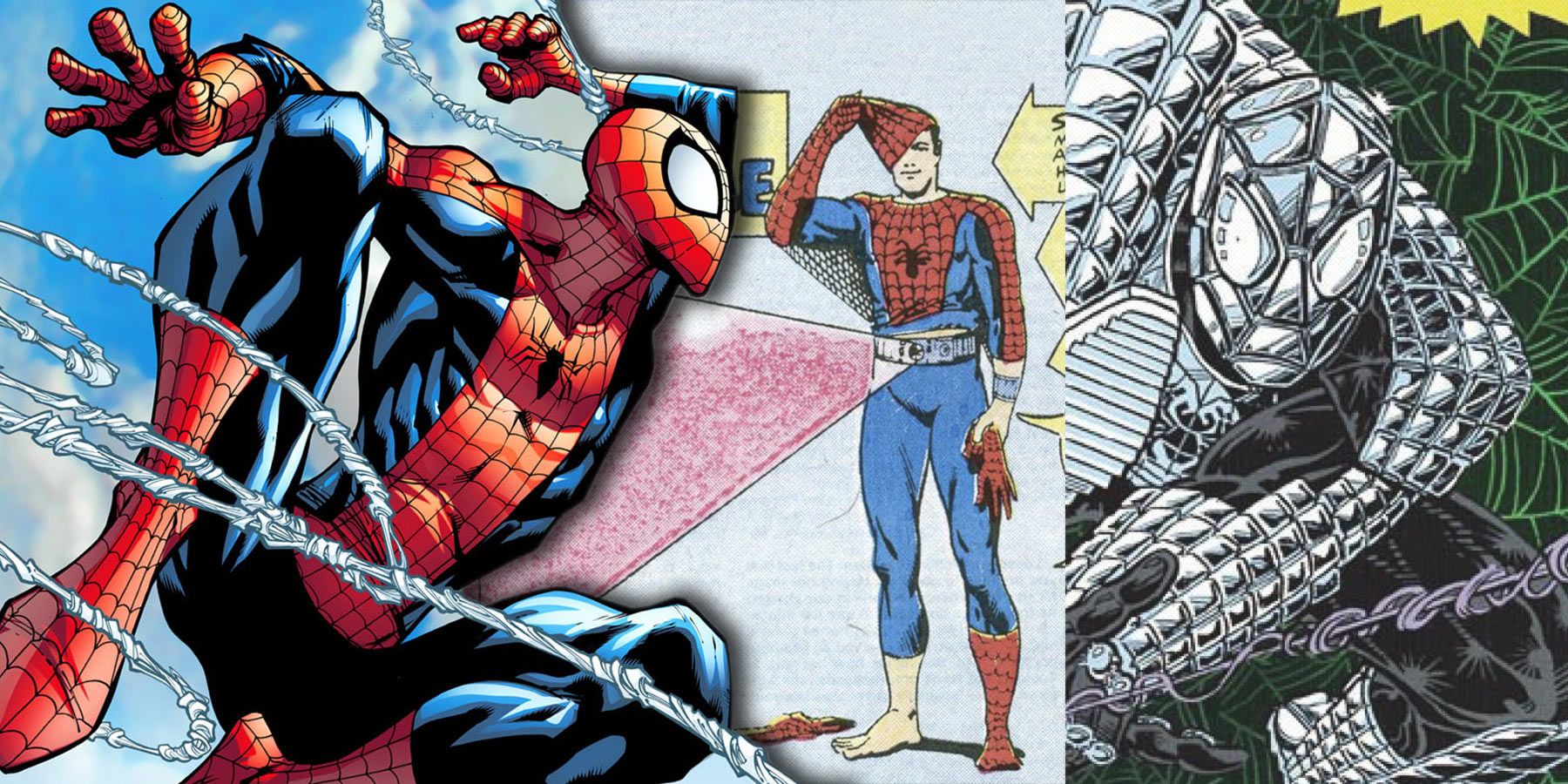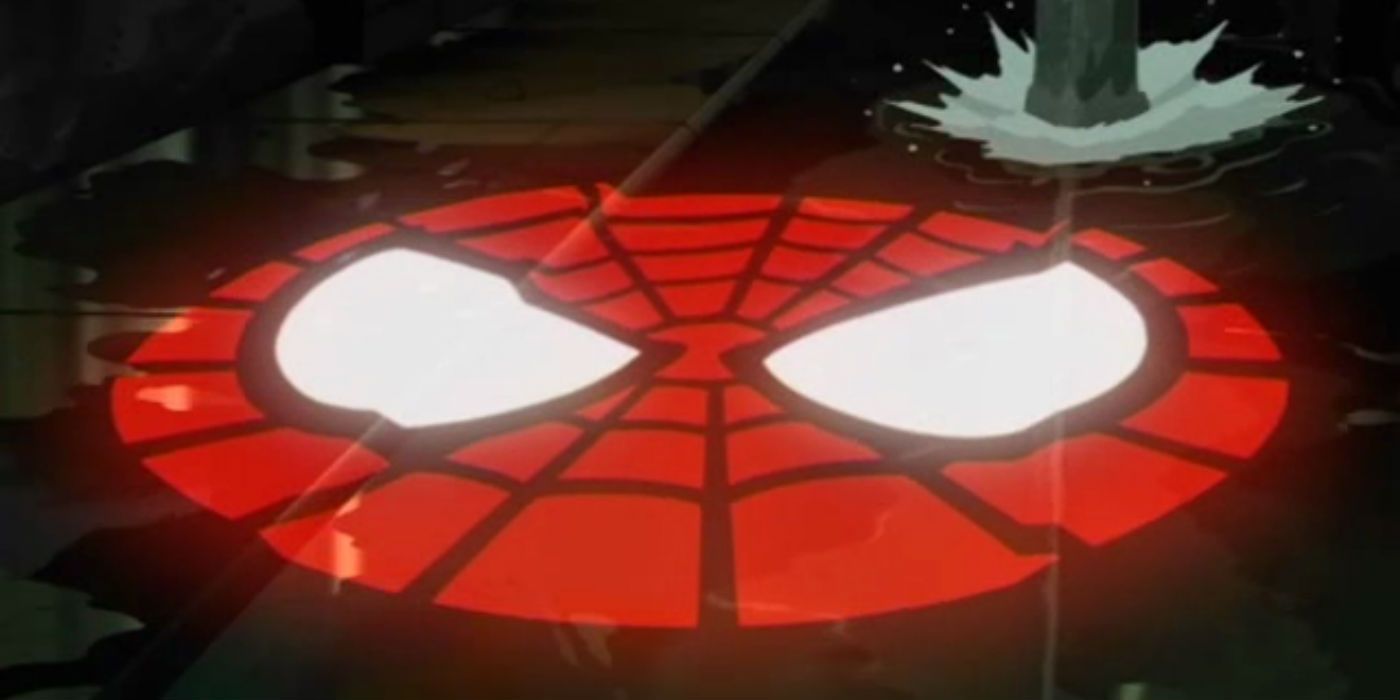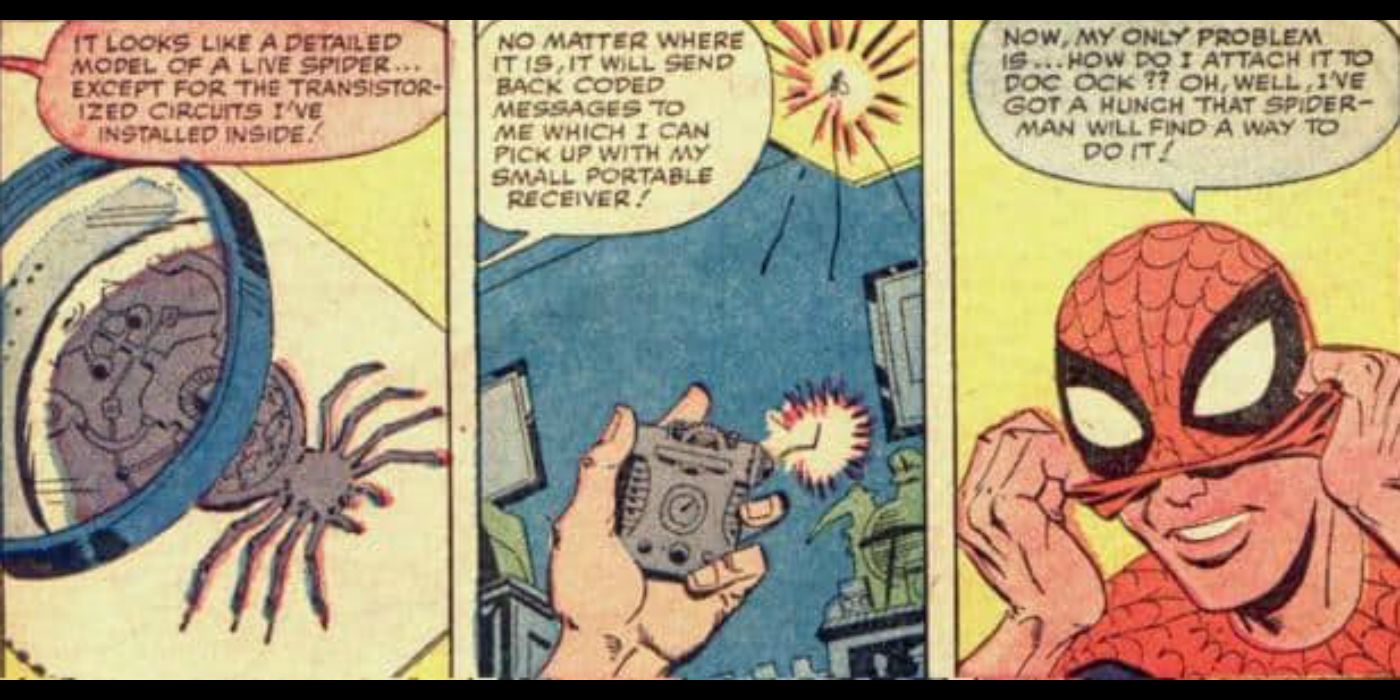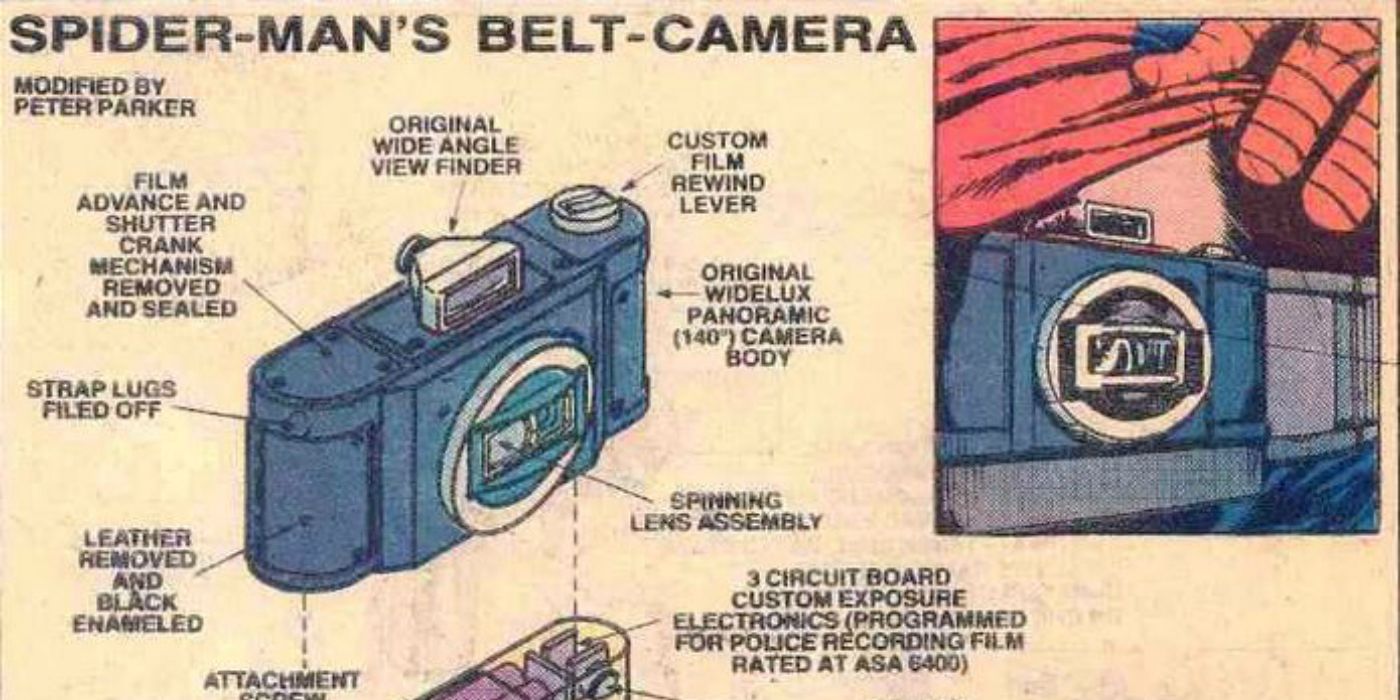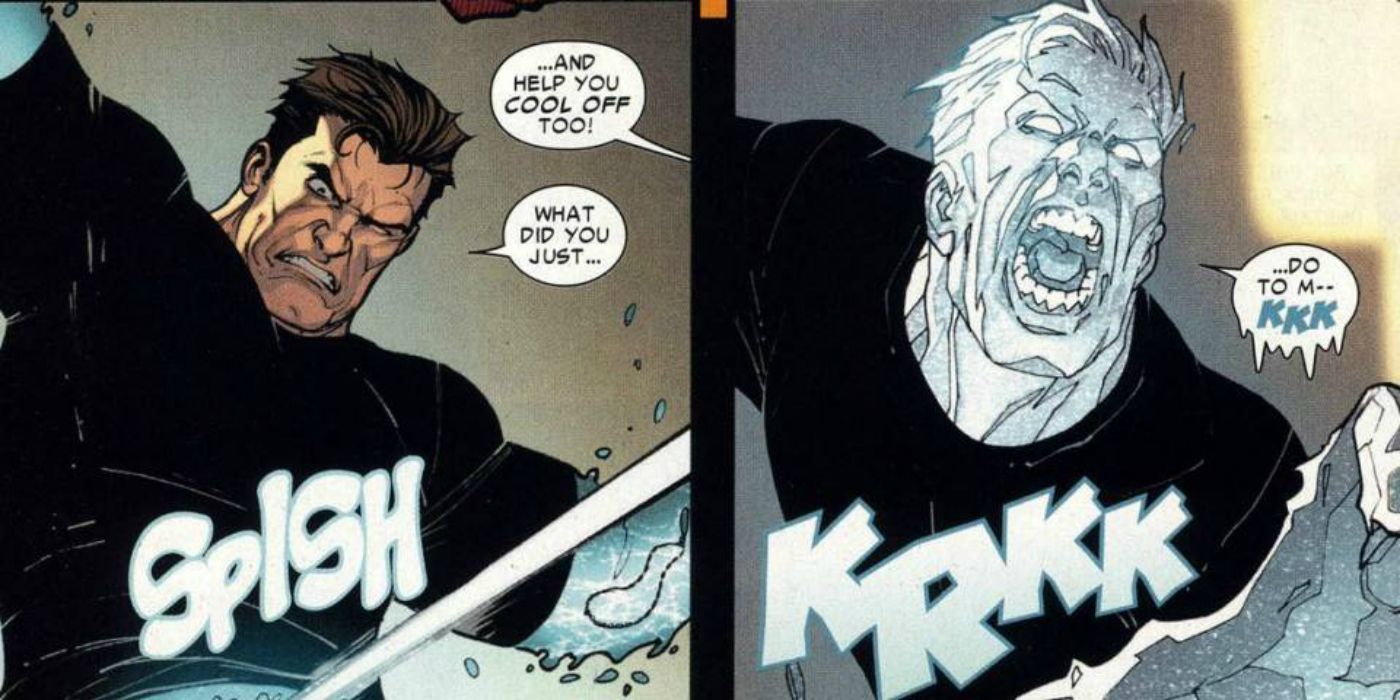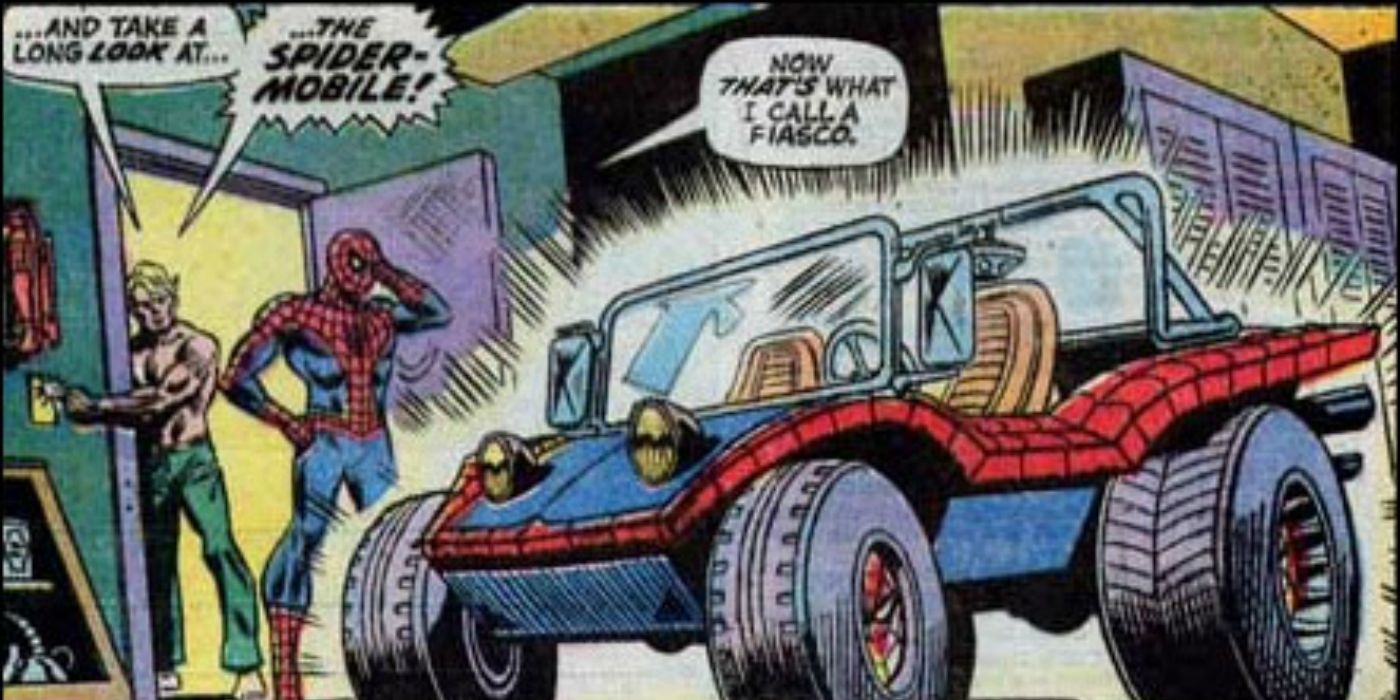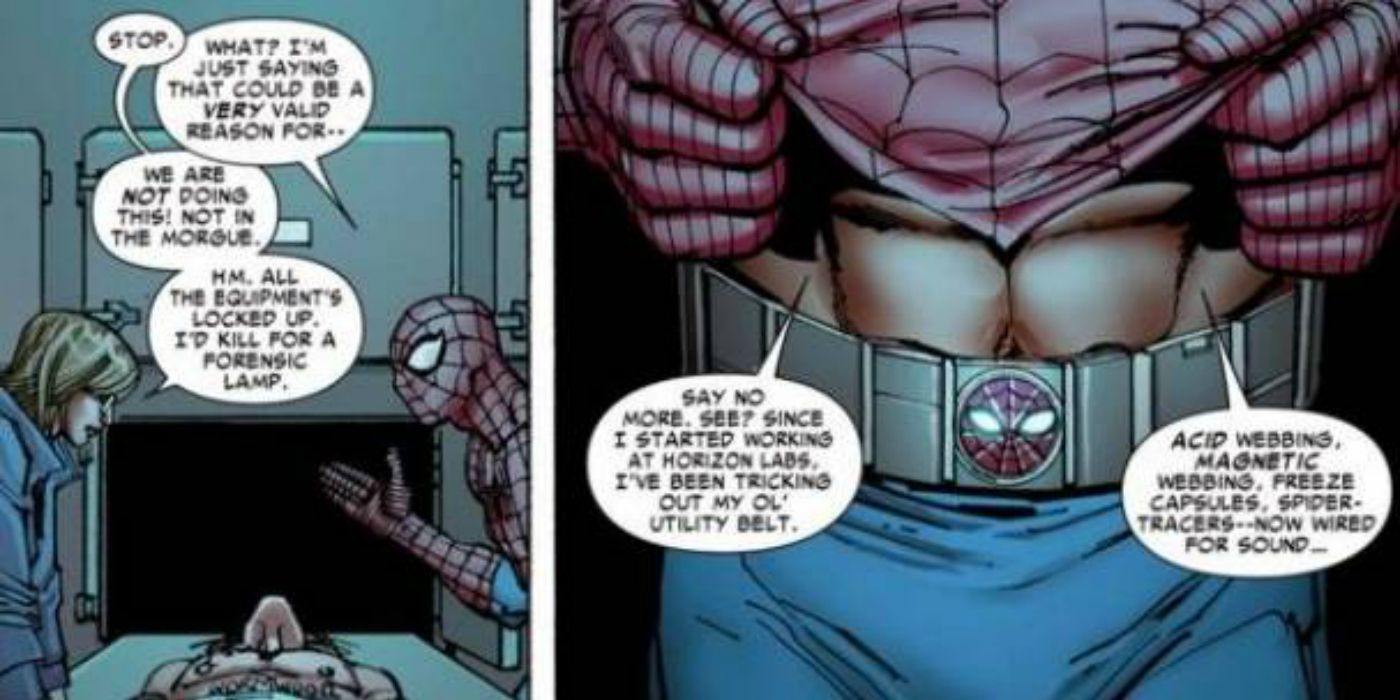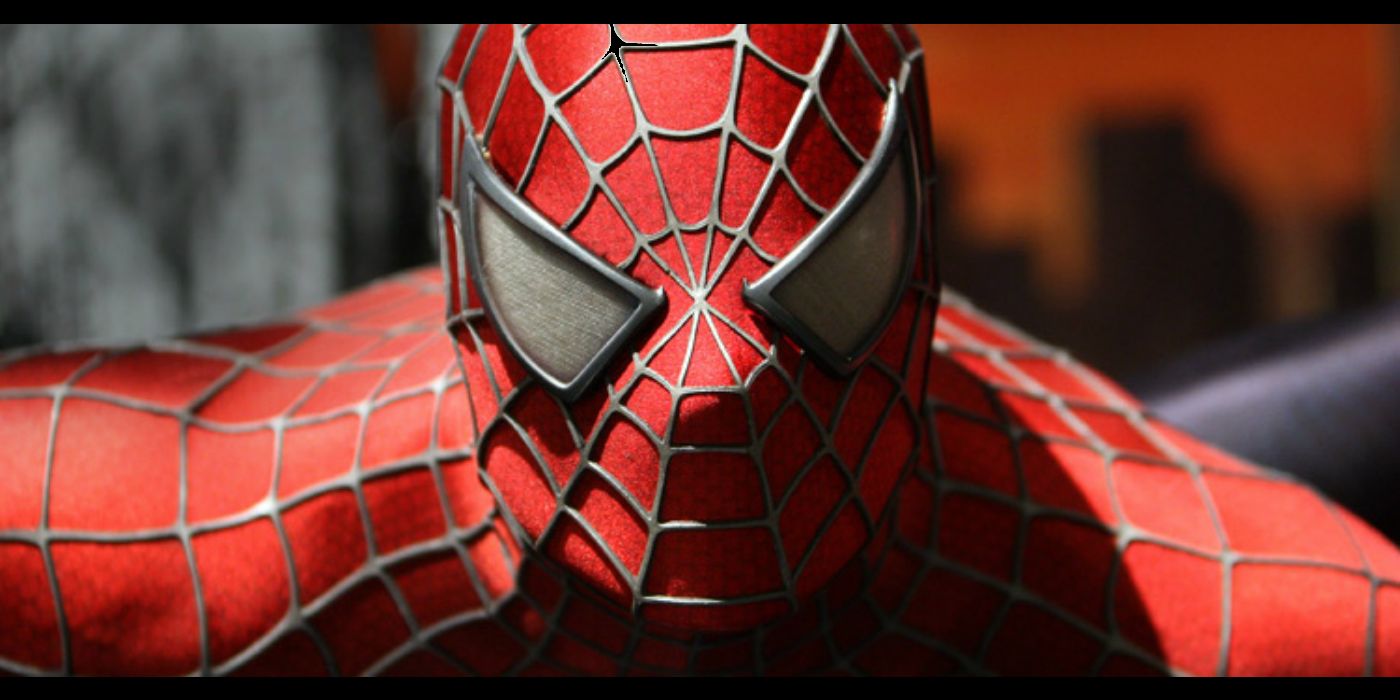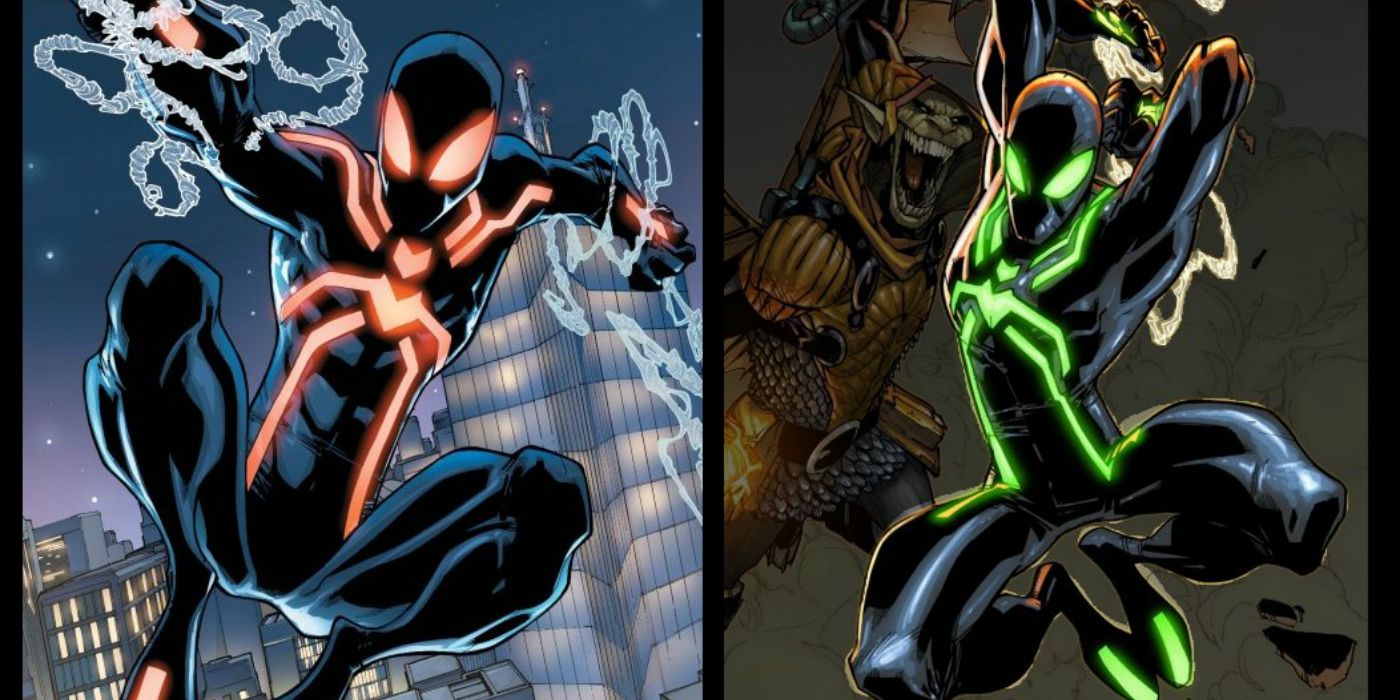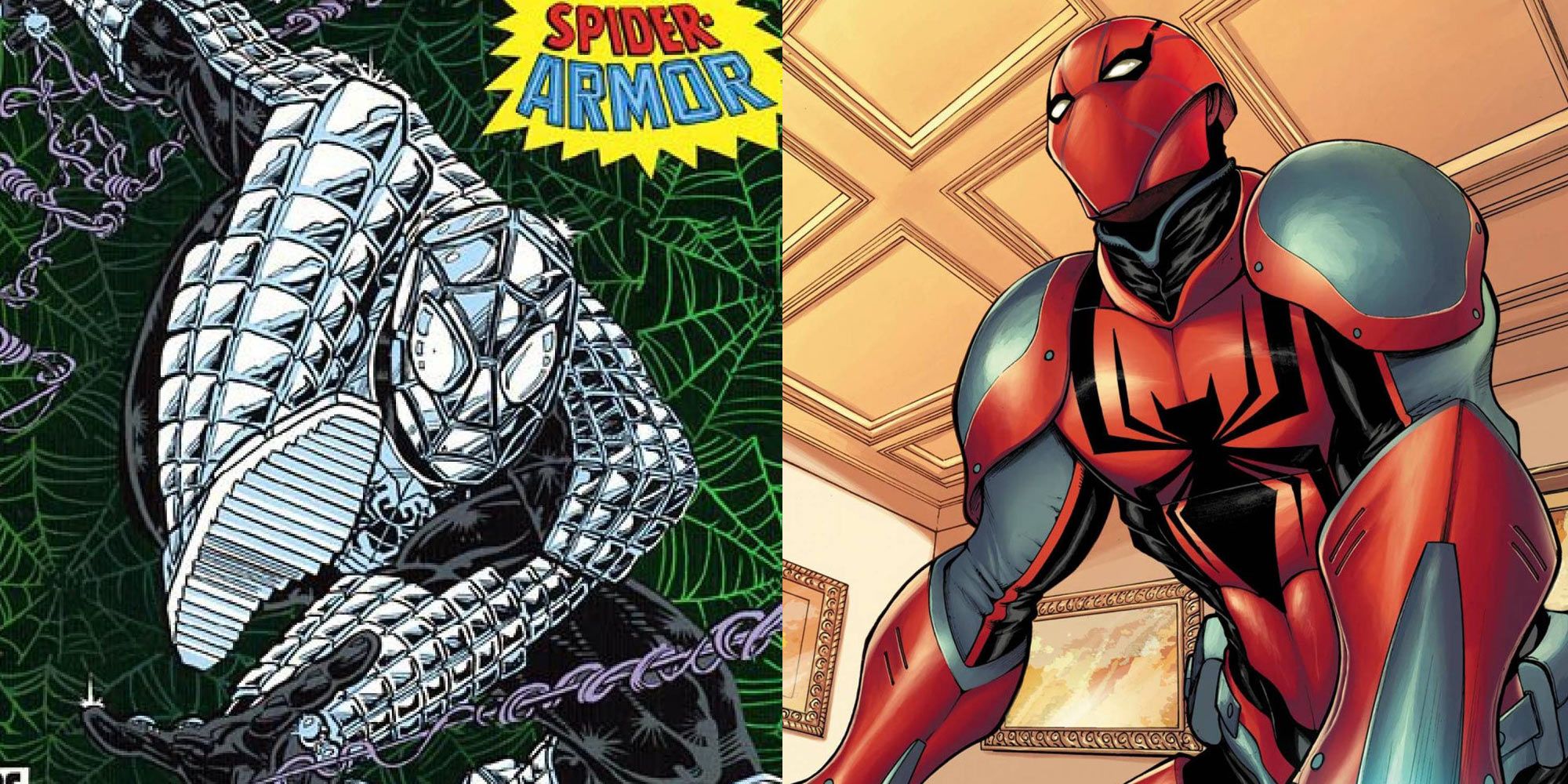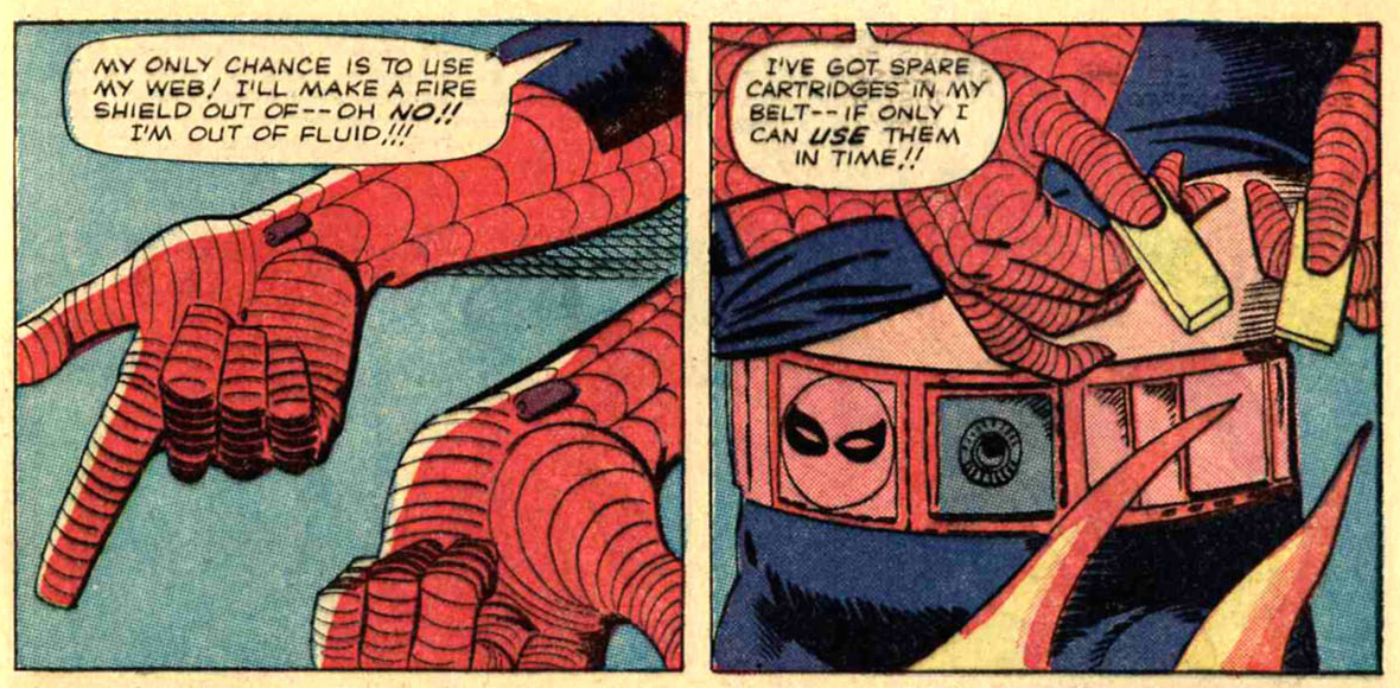Spider-Man has plenty of superpowers, but he can't always just fall back on them. His enhanced strength, speed and agility make him a powerhouse, but some enemies and situations call for more than even his amazing abilities can handle. Luckily, unlike most super-powered heroes, Spider-Man isn't just about brawn; he also has brains! In fact, his alter ego, Peter Parker, is a scientific genius. If he doesn't have an ability, Spider-Man just makes himself a gadget that does it for him. The wall-crawler has created hundreds of tools to help him in fighting crime, including a few different vehicles to help him get to the fight faster and even weapons to fight specific criminals.
Spider-Man's next movie will be "Spider-Man: Homecoming," which finally brings him into the Marvel Cinematic Universe, and a recent set photo gave us a good look at the superhero's new web-shooters. His webbing is perhaps his most famous piece of equipment, but it's not the only one. In honor of his upcoming flick, let's take a closer look at 10 of the web-swinger's most amazing gadgets!
10 Spider-Signal
Batman has the Bat Signal. Spider-Man has the Spider-Signal. Just like Batman, the Spider-Signal projects a light with his insignia, but that's where the similarity ends.
The Spider-Signal first appeared in 1963's "The Amazing Spider-Man" #3, and lately even made an appearance at the end of "Captain America: Civil War." Unlike Batman, who has to wait for the police to shine his signal from the roof of police headquarters, Spider-Man keeps his right on his belt buckle. With the push of a button, the belt shoots out a powerful beam with Spider-Man's familiar webbing-and-eyes symbol.
He uses the signal mainly to intimidate criminals, and there's nothing that shocks and terrifies criminals like suddenly seeing Spider-Man's face on the wall in front of them. He can also use it to call for help or use it as a flashlight in an emergency, focusing the beam ahead of him while searching for the bad guys.
Most recently, Spider-Man added a UV light setting to the Spider-Signal, which allows him to do forensic work, since certain body fluids will glow beneath that particular part of the spectrum. It's a dirty job, but someone has to do it!
9 Spider-Tracer
Spider-Man can't be everywhere at once. Sometimes he needs to keep track of someone or something when he's not around. He's also not as fast as The Flash, so sometimes his enemies get away. That's why he created his spider-tracer.
First appearing in 1964's "Amazing Spider-Man" #11, the tracer is a small device shaped like a spider. He keeps them in his web-shooters, so he can fire them as needed. The tracers can stick to any object, and he usually uses them to target an escaping enemy. The tracers are small and light enough that they usually won't be noticed. In early stories, Spider-Man needed to use a receiver to track them, but now the tracers will trigger his spider-sense. He can swing around the city until he feels his spider-sense tingling and he knows it's nearby.
In recent issues, Spider-Man has also outfitted his tracers with microphones, so he can listen in to the surroundings. They now let him eavesdrop on the bad guys' conversations, so he can do covert surveillance without being seen. The NSA has nothing on ol' Web-Head!
8 Belt Camera
Having a portable camera may not seem that revolutionary in an age where everyone has a camera built into their smartphone. But back in the sixties, Peter Parker's camera was really high-tech, and still kind of is.
Since 1963's "Amazing Spider-Man" #2, Peter Parker's main source of income has been freelance photography -- well, until recently, when he founded his own multibillion-dollar company, Parker Industries. Before he was a captain of industry and needed a few extra bucks to pay rent or make more web cartridges, he would go out and take pictures of Spider-Man to sell to The Daily Bugle.
Although he has recently switched to digital, Spidey's first camera was his father's, which he would attach to walls or poles so he could use it to take pictures. Later on, he added a motion sensor so that the camera would automatically take pictures when he swung in front of it.
Over time, his cameras have gotten more advanced. He's switched to a smaller camera built into his utility belt so he can take pictures hands-free. He can also set it to automatically take photos on its own, so he doesn't have to pause in the middle of a fistfight with The Vulture. In fact, he's become pretty handy at taking professional-quality photos while swinging and fighting his ever-growing list of foes. Try doing that with your iPhone's camera!
7 Cryo Cubes
Some of Spider-Man's greatest inventions have come from trying to fight a specific supervillain. There's no better example than the Cryo Cubes.
The technology behind the Cryo Cubes began as a weapon against Hydro-Man. First appearing in "The Amazing Spider-Man" #212 (1981), Hydro-Man has the power to turn himself entirely into water, and also control water. He's a villain that's hard for Spider-Man to fight, but he has the same weakness as real water: cold. When exposed to extreme cold, Hydro-Man is frozen solid.
Because there's often a shortage of freezers around when fighting Hydro-Man, Spider-Man developed a cryogenic formula that can freeze living things without destroying cells. He uses the formula in a new version of his spider-tracer in "The Amazing Spider-Man" #666 (2011) to freeze Hydro-Man. It's so successful that he has used it elsewhere, so much so, in fact, that they have become a regular part of his equipment.
But the best part is that after going to the hospital to help rescue a firefighter, Spider-Man discovers his formula has been turned into a product called the Cryo Cube 3000. He further learns that his Cryo Cubes have been adapted to transport amputated body parts, with the doctor informing Spider-Man that his technology hasn't just saved lives through crime-fighting, but also through science!
6 Spider-Mobile
Yes, Spider-Man had a car once. And even he thought it was a dumb idea.
In his book, "Everything But the Gwen Stacy Sink," former Spider-Man writer Gerry Conway explained that in the 1970s, a toy manufacturer convinced Stan Lee to write a car into the comics. Toy manufacturers love cars for action figures because it's a more expensive purchase for a toy you already own, which means more money for the company. But as Conway and everyone else would point out, Spider-Man doesn't really need a car, since he mainly travels by swinging on webs. Still, Stan Lee convinced Conway to give him a car.
In "Amazing Spider-Man" #130 (1973), Spider-Man is approached by a fictional car company called Corona Motors. They offered him a promotional opportunity if he would install a non-polluting engine they had designed in a vehicle of his choice. At first, Spider-Man turned them down, but decided he needed the money and reluctantly agreed. With help from the Human Torch, Spider-Man turned a customized dune buggy into the Spider-Mobile. It had Spider-Signal headlights, an ejector seat, and web-shooters. But it turned out Peter Parker hadn't learned to drive (hey, he was a teenager living in New York), and promptly crashed it. He abandoned the vehicle, calling it "hokey," and went on his way. Conway had done his job, and made his point.
Recently, under writer Dan Slott, the Spider-Mobile has returned -- albeit with a new design and ramped-up capabilities -- but time will tell if Spidey's new wheels will have the mileage needed to match the iconic original.
5 Utility Belt
Another tool Spider-Man shares with Batman is a utility belt he wears with his costume. It doesn't carry anywhere near as much equipment as Batman's, but it has quite a few gadgets and Spider-Man would be lost without it.
The belt goes on the inside of his costume, around his waist and hidden by his shirt, but he can pull it up to reveal the belt as needed. Spider-Man first designed his utility belt in "Amazing Spider-Man" #2 (1963) when he started running out of web fluid. He needed somewhere to keep spare cartridges, so he could restock his web-shooters while on the go. The belt holds thirty web cartridges, and also holds an assortment of different cartridges for special occasions. Recently, he's taken to carrying acid webbing and magnetic webbing in his belt, as well as freeze capsules.
Besides his cartridges, Spider-Man also carries his camera in his belt for taking photos to sell to The Daily Bugle, his spider-tracers and, as we mentioned earlier, his Spider-Signal.
4 Spider-Man's Mask
Spider-Man's mask is one of his most recognizable features. The shape of his eyes and distinct webbing pattern have become a symbol for Spider-Man himself. But the mask does more than cover his face and make him look cool. It also serves some very important functions.
For one thing, the eye-holes of his mask are actually two-way mirrors. Unlike other costumes, like a domino mask, Spider-Man's eyes are completely hidden, so no one can tell the color of his eyes or skin. The mirrors also allow him to see perfectly in all conditions. Dust and dirt are kept out, and the lenses filter out the sun's glare. The lenses also protect his eyes from the wind while he's swinging through the city.
Spider-Man has also made some adjustments over time for special situations. With his Spider-Armor (which we'll get to later), he set up his lenses so they would be able to see through Mysterio's illusions and scan Sandman for weaknesses. In "Amazing Spider-Man" #16 (2015), Spider-Man set up filters on his lenses to protect himself from the super villain Iguana's hypnotic stare. On a practical level, the mask also muffles his speech to keep him from being recognized.
3 Stealth Suit
Spider-Man's red and blue costume is iconic and instantly recognizable. That's good when you're chasing down bad guys, but less so if you're trying to sneak around unnoticed. Up until recently, it's also had little-to-no defense against things like fire, bullets or even sonic attacks. That's where the stealth suit comes in.
In "Amazing Spider-Man" #650 (2011), Spider-Man needed to find a way to combat the Hobgoblin's super sonic "Goblin Laugh." The super villain's cackle is capable of disorienting his enemies and even shattering eardrums. As a defense, Spider-Man used an "omni-harmonic mesh" to create a suit capable of bending light and sound around it. In the process, he created a suit that could turn invisible.
The suit has two modes, the difference between which you can tell by looking at the lighted spider symbol on the costume. In the "green" mode, his suit can't be seen or heard by anyone without with special lenses that he wears and gives to his allies. When the suit is in "red" mode, all sounds are cancelled out. That means no one can hear him, and sonic weapons can't be used against him. They can still see him, though.
With his stealth suit, Spider-Man can camouflage himself and undertake covert missions. Not that he's exactly loud under normal circumstances, but sometimes he needs the extra edge.
2 Spider-Armor
Before Dan Slott gave it a malleable metal upgrade, Spider-Man wasn't bulletproof. His costume wasn't even padded, it was just lightweight fabric so he could wear it under his clothes. While he's fast and agile enough to dodge most weapons, sometimes he needs to wear something heavier to protect himself; hence, the fan-favorite Spider-Armor!
He first wore Spider-Armor in "Web of Spider-Man" #100 in 1993. While battling a super villain team called the New Enforcers, Spider-Man decided he needed a stronger suit to deflect damage. In a lab at Empire University, he created a silvery armored suit called "spider-armor." While it did protect him, he found that the added bulk slowed him down, causing him to get hit by bullets. It didn't take long before the armor was destroyed by acid, so he abandoned it.
There have actually been three more versions of Spider-Man's Spider-Armor, like the Iron-Spider uniform given to him by Tony Stark after Peter died (and subsequently came back to life) during "The Other" storyline. In 2011, Spider-Man lost his spider-sense, so he could no longer sense bullets coming towards him, so in "Amazing Spider-Man" #656, he created a suit of armor that was bulletproof.
In "Amazing Spider-Man" #682 (2012), he created a third suit of armor with more enhanced capabilities. It had enhanced hearing, sensors in his visors, web-shooters built into his gauntlets, and a communicator.
In 2015's "Amazing Spider-Man" #1 (Volume 4), Spider-Man created a way more advanced suit of armor made of a lightweight metallic liquid that can resist bullets and even lasers, but is light enough to let him move quickly. It can also transform into different outfits like a business suit. The Spider-Armor Mark IV also fires special webbing that hardens as strong as concrete, and can also shoot quick-drying foam, acid, and sonic waves.
Despite the benefits, Spider-Man has always gone back to his regular costume; more proof that he doesn't necessarily need gadgets to be amazing.
1 Web-Shooters
Among his other spectacular powers, one ability Peter Parker didn't originally receive from his radioactive spider bite was the power to spin webs. But he knew you couldn't truly be a Spider-Man without webs, so he created his own shooters. His web-shooters are probably his most famous and recognized gadget. He's had them since his first appearance in "Amazing Fantasy" #15 in 1962, and they've continued to be in all incarnations, except for Sam Raimi's movie trilogy and briefly in the comics during the "Avengers Disassembled" storyline, where Spider-Man produced webbing organically.
Most of the web-shooters are composed of bracelets that wrap around his wrists. Each bracelet holds cartridges of a sticky substance based on real spider-webbing. A trigger runs down into his palm. When he taps the trigger twice with his middle fingers, the bracelet punctures the cartridges, shooting out the sticky fluid. When the fluid comes out, Spider-Man can adjust the width of the nozzle, and uses spinnerets to make the line as a thin as a human hair or shoot out as a thick blob. The webbing is extremely strong and also very sticky, just like a real spider's web.
From there, the uses are almost infinite. He can swing from the webbing like a rope, tie up opponents or shoot out webbing into a net to trap opponents. He can even use it to stick things together, like his opponent's arms and legs or his camera to walls. Spider-Man has even used his webbing to make shapes like parachutes, shields and skis. It's Spider-Man's Swiss army knife of gadgets.
What other Spidey gadgets get your webs spinning? Let us know in the comments!
"Spider-Man: Homecoming," starring Tom Holland, Marisa Tomei and Zendaya, opens July 7, 2017.

